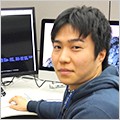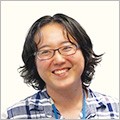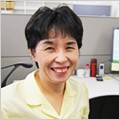
The 106th AICS Cafe
Date and Time: Wed. Feb. 8, 2017, 15:30-16:30
Place: Workshop room (6th floor) at AICS
Title: Fast Evaluation of Two-Electron Integrals using Pseudospectral Methods
Speaker: Keisuke Sawada (Computational Molecular Science Research Tea)
Presentation Language: Japanese
Presentation Material: English
A fast estimation of two-electron repulsive integrals (ERIs) is an important and imperative subject in any ab-initio quantum chemical calculations. Since the computational cost of the ERIs formally increases as N4, where N is the number of basis functions, we often suffer from much time-consuming estimations in large molecular systems.
In order to address the tough problem, several methodologies have been developed to date. Among them, the pseudospectral (PS) method is a strong candidate for a quick and efficient evaluation of the ERIs. In the PS method, one analytical integral is replaced by a numerical summation consisting of discrete grid points and the computational cost is reduced from O(N4) to O(MN2), where M is the number of grid points.
In this study, we implement the PS method into our NTChem program and investigate the performances of this method using the MPI/OpenMP hybrid parallelized code. In large molecular system which includes more than 8,000 basis sets, we find that the PS method shows a good scaling with respect to used CPU cores and becomes much faster than the analytic integral methods.












